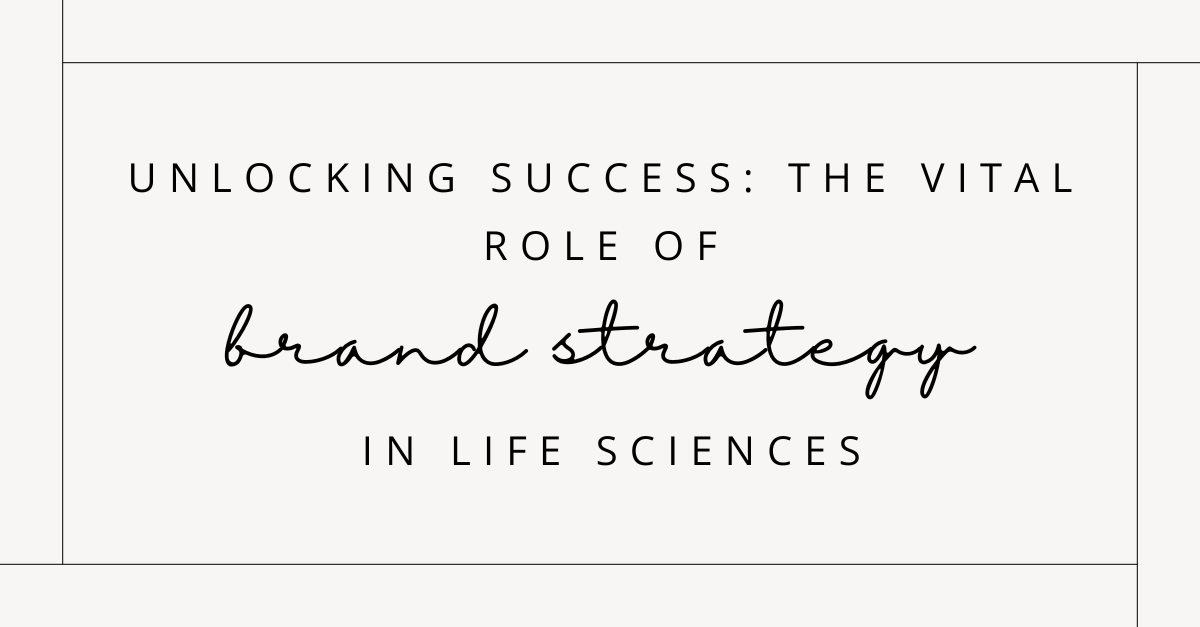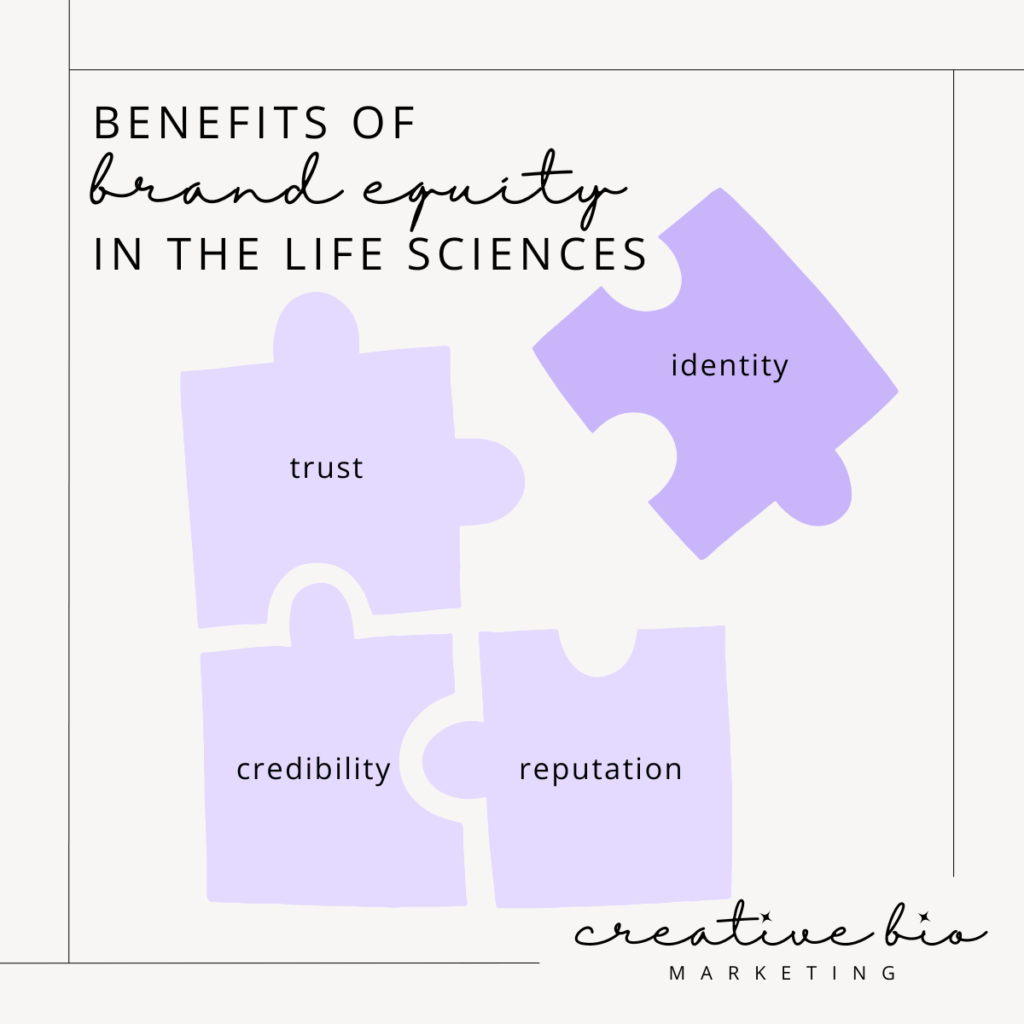
Unlocking Success: The Vital Role of Brand Strategy in Life Sciences
unblocking success: the vital role of brand strategy in life sciences
Everyone knows that science rocks! But in the life sciences, it often seems that research and innovation take center stage of a company’s identity, leaving branding as an afterthought. And that is risky business.
While popular opinion says that brands are synonymous with a logo or a tagline, the truth is branding is actually the heartbeat of how life sciences companies communicate with the world. Without a proper branding strategy, life sciences companies run the risk of missing the mark when it matters most.
Why Branding Matters in Life Sciences
In the context of life sciences, branding transcends superficial aesthetics like logos or color schemes. At its core, branding is about forging meaningful connections with stakeholders, fostering trust, and ultimately driving positive outcomes in healthcare and beyond.
human first, b2b second
Unlike consumer goods, where the target audience is often the end consumer, life sciences companies primarily cater to professionals and institutions. However, it’s essential to remember that behind every purchase decision lies a human being. Thus, effective branding in life sciences must prioritize the human element, engaging with customers on a personal level, and articulating the ‘why’ behind the science.
To achieve the desired connection with the target audience, companies must understand their ‘why.’ Unarguably, the life sciences industry has it easier than most because of their direct impact on lives. Whereas others operate in the nice-to-have economy, life sciences exist to solve critical needs in society. The criticality of this work serves as the centerpiece of all life sciences brands.
building trust to influence change
As a biotech, pharma, or healthtech company, precision and accuracy are paramount to success. It might be surprising to discover that branding plays an essential role in conveying the seriousness and integrity of a company’s science and tech. If the audience buys into and trusts the information and brand shares, they will be much more likely to have a positive opinion of that company. Trust is essential in life sciences branding and helps companies build critical brand equity (the social value of a brand), which can make or break a company.

Strong brand identity instills confidence in stakeholders – from pharma scientists to healthcare providers and even to patients – influencing smoother adoption of products and services. Reputation is often an underlying factor influencing these decision-makers. Therefore, establishing credibility through consistent branding efforts is perhaps one of the most impactful ways to influence market perception and gain a competitive edge.
Challenges in Branding for Life Sciences
Despite its undeniable importance, crafting a compelling brand strategy for life sciences companies comes with its own set of challenges. From balancing technological innovation with relatable messaging to navigating the intricate landscape of regulatory compliance and market access, life sciences companies must tread carefully to ensure their branding efforts resonate with the intended audience – or even multiple audiences (think investors, government agencies, etc). Brand strategy in life sciences is a careful balancing act that does not just happen but is rather meticulously constructed (by your friendly brand strategist 🙂).
Balancing Technology and Messaging
Do you know how to build a ship? My guess is no. Would you then expect a marine engineer to know the nuances of your technology? It is all too easy to assume that your targets speak the language and have the exact same knowledge as you. In reality, everyone has a different background and perspective. It’s the great equalizer.
This is one of the primary challenges that life sciences companies face when it comes to branding. The right balance must be struck between showcasing technological advancements/capabilities and communicating effectively with the target audience. The challenge lies in the fact that the target audience contains both technical (i.e. pharma and healthcare executives) and non-technical individuals (i.e. patients.) While the allure of cutting-edge innovation is undeniable, it’s equally crucial to translate complex scientific concepts into digestible narratives that resonate with all stakeholders. The sweet spot lies in the ability to activate human emotion and back it with reasons to believe in innovation. There are many ways to approach this challenge, but having a solid brand foundation is key.
Differentiating Among Competitors
In an industry where innovation is standard, how does a company stand out? Leaning on technology is not enough. There are thousands of startups with thousands of great ideas. But it is only the brands that can clearly articulate their value and get buy-in to their version of the future that are successful. Too many companies fail to stand out from the competition, whether it be during a funding raise, or when it comes to selling products or services. Again brand strategy is key. For instance, a strong, inspiring brand story and messaging provides life sciences companies with a mechanism for clearly articulating and sharing a unique value proposition to stand above the crowd.
Complex, Heterogenous Targets
Another unique challenge faced by all life sciences companies in some way, shape, or form is navigating regulatory hurdles. Whether it’s dealing with the regulatory burden during discovery to securing market access to innovative therapies, there is a great deal of effort and planning that goes into building strategic partnerships and proactive engagement with regulatory agencies and even payers. These are additional potential stakeholders within a life sciences company’s target audience and add to the complex heterogeneous mix of individuals that brands must resonate with. This emphasizes the essential need for a brand strategy that accounts for these complexities and offers a path toward building equity among these groups.
Crafting a Comprehensive Brand Strategy
So, what exactly does a robust brand strategy entail for life sciences companies? Enter the brand playbook – a comprehensive roadmap that guides all marketing and brand communication actions. By leveraging the Creative Bio Marketing approach, life sciences companies can encapsulate their brand strategy in a playbook that not only aligns with their overarching goals but also resonates with their target audience on a profound level.
In conclusion, while the world of life sciences may be driven by groundbreaking discoveries and technological innovations, the importance of branding cannot be overstated. From fostering trust and credibility to navigating regulatory complexities, a well-crafted brand strategy serves as the foundation of success in this dynamic and ever-evolving industry. By prioritizing human-centric communication and differentiation, life sciences companies can unlock new pathways to success and make a lasting impact on global health.
So rock on, rockstars!

